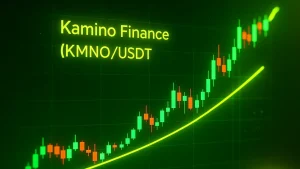From Zero to Hundreds of Millions: How Consumer-Facing DApps Stole the Spotlight
A new revenue hierarchy is emerging across Web3. Twelve months ago, few analysts expected a single on-chain application to eclipse the fee income of a major Layer-1 network. Yet that is precisely what has happened. Trading game PumpFun has amassed roughly $724 million in fees over the past year, while perpetuals exchange Hyperliquid is close behind at $667 million. By comparison, their host chain, Solana, captured about $632 million in fees during the same period, even though it processed record transaction volume and enjoyed a breakout in price. Recent research from Delphi Digital confirms the trend: application-level businesses are now the fastest-growing profit centers in crypto, often crossing nine-figure annual run rates within a single product cycle.
The stablecoin sector amplifies the picture. Tether’s treasury bills and repo agreements are on pace to deliver an estimated $15 billion in net profit this year—making the company one of the most lucrative businesses on earth on a per-employee basis. At the protocol level, however, Layer-1s continue to rely primarily on inflationary token emissions to fund security budgets, a model that dilutes holders while failing to keep pace with application revenues.
Revenue Velocity and the Rise of “Attention-Scalers”
Crypto revenue used to accrue slowly. Early DeFi lenders such as Maker DAO and Aave needed several years to clear $100 million in cumulative fees. That changed during the so-called “terminal era,” when aggregator front-ends and trading dashboards condensed the user journey and compressed time-to-revenue. Today, a new breed of product—dubbed “attention-scalers” by Delphi’s analysts—optimises not only capital efficiency but also social virality. PumpFun, Hyperliquid, Axiom, and more recently Aster all iterate at internet speed, layering spot, perp, and leverage markets into a single interface and rewarding early users with points, memetic assets, or spin-off tokens. The result is exponential revenue “velocity”: profits grow in lock-step with social engagement rather than merely with on-chain volume.
For the underlying chains this is a double-edged sword. More activity drives higher gas consumption, yet fee markets have become so competitive—especially on high-throughput networks such as Solana—that base-layer capture is minimal. Unless Layer-1s introduce mechanisms that internalise a larger share of value (for example, by embedding MEV auctions or sharing sequencer revenue with token holders) the “L1 premium” many investors once assumed is likely to keep eroding.
Vitalik Buterin’s Low-Risk DeFi Proposal and the Battle for Sustainable Economics
Ethereum’s co-founder Vitalik Buterin recently addressed the dilemma in a blog post comparing low-risk DeFi to Google’s flagship search business. Just as advertising revenue funds a broad portfolio of Moonshot projects at Alphabet, Buterin argues that a dependable, ethically sound stream of lending or stablecoin yield could underwrite Ethereum’s public-goods funding and developer grants. He cites the mid-single-digit yields available on blue-chip stablecoin deposits within protocols like Aave as a potential cornerstone: high enough to matter, low enough to avoid excessive risk.
Whether that vision materialises will depend on governance decisions across multiple layers. If chains adopt shared-sequencer models or enforce protocol-level fee buy-backs, the balance of power could tilt back toward the base layer. Conversely, if application teams continue to capture the lion’s share of revenue—and users remain indifferent to which chain they transact on—then the future of crypto may look more like a competition among vertically integrated apps than a battle among Layer-1s.
Either way, the numbers have delivered a wake-up call. In Web3’s next chapter, user experience and rapid product iteration—not raw blockspace—appear set to define where the real money flows.




